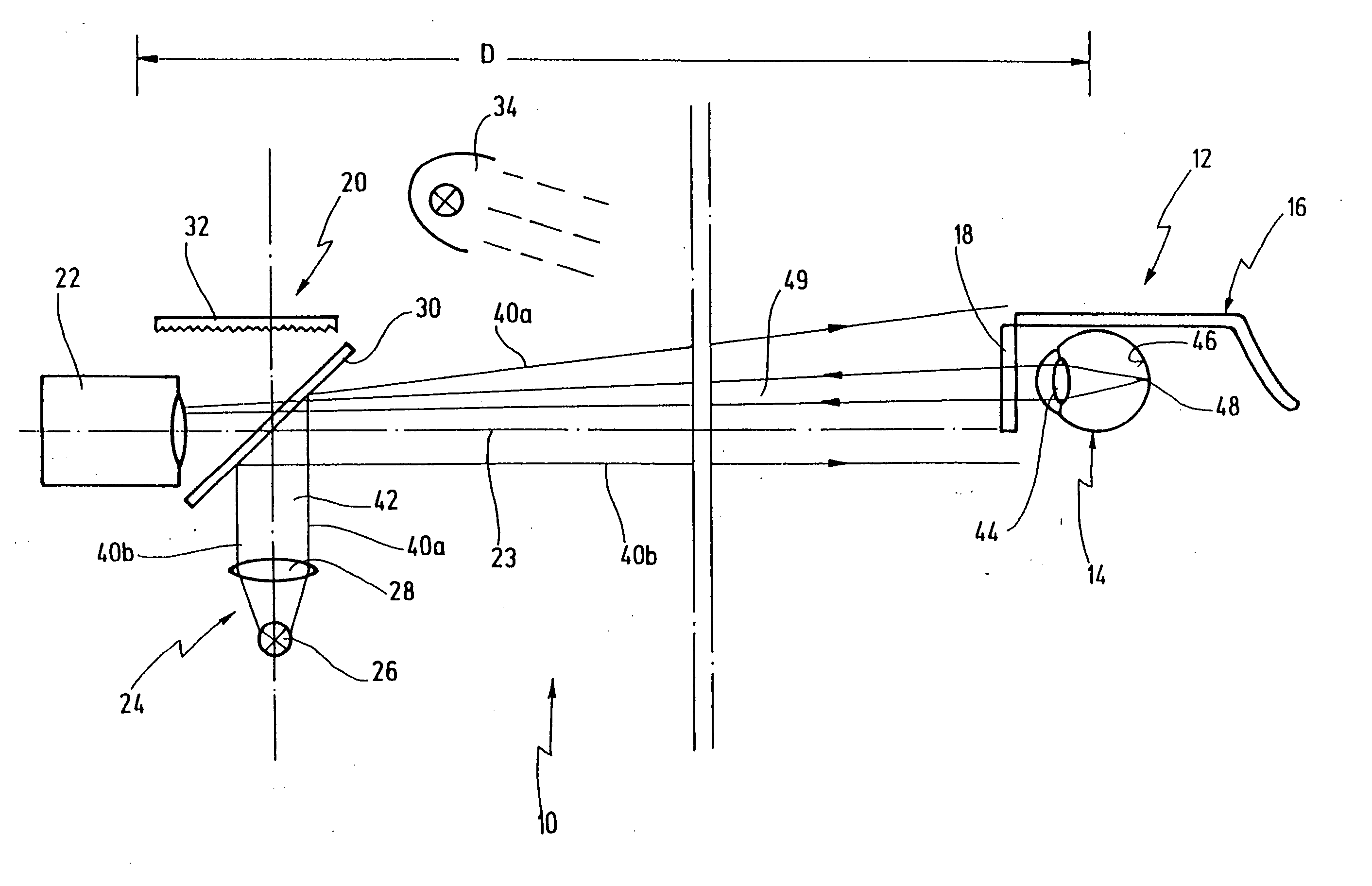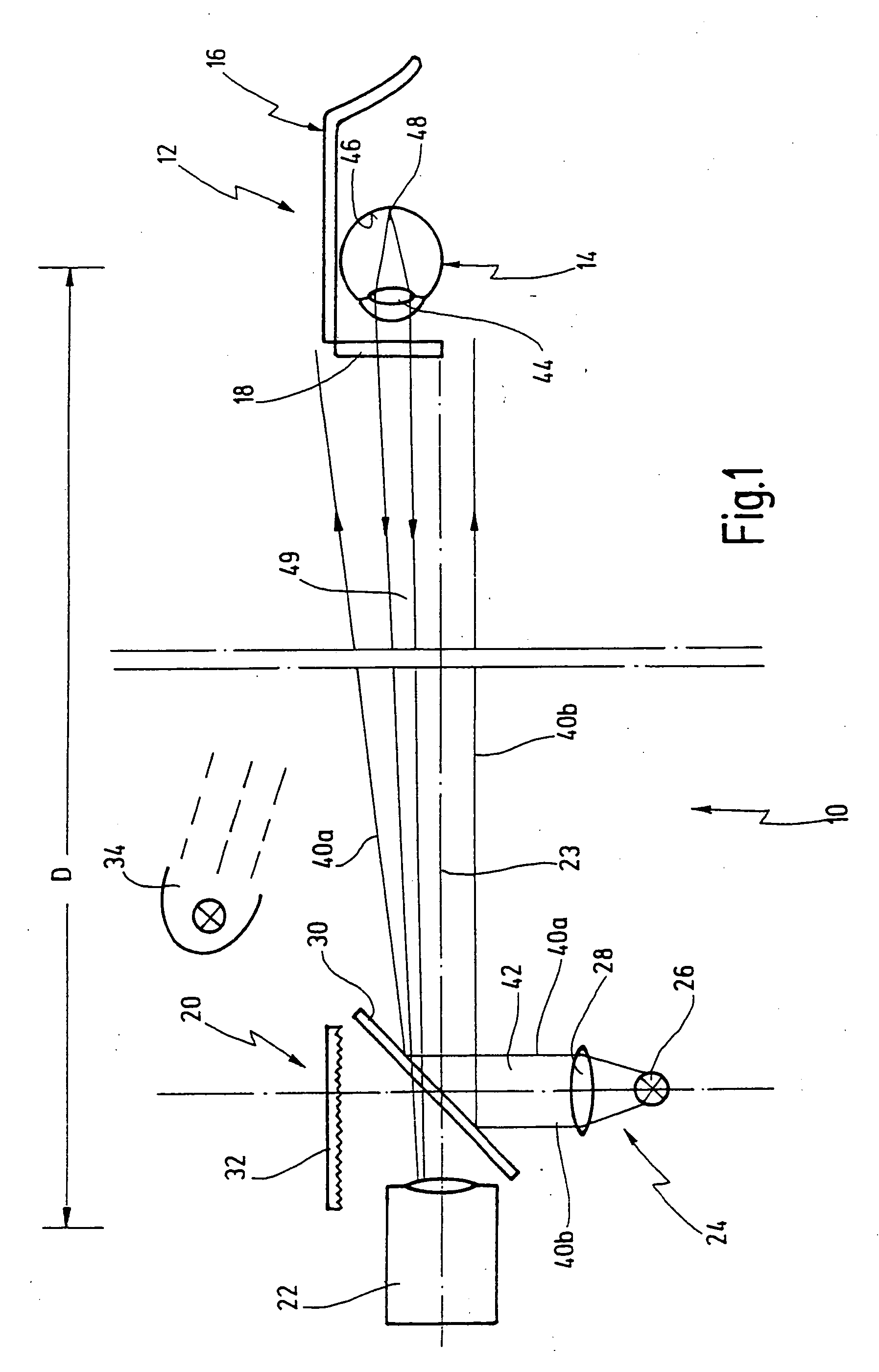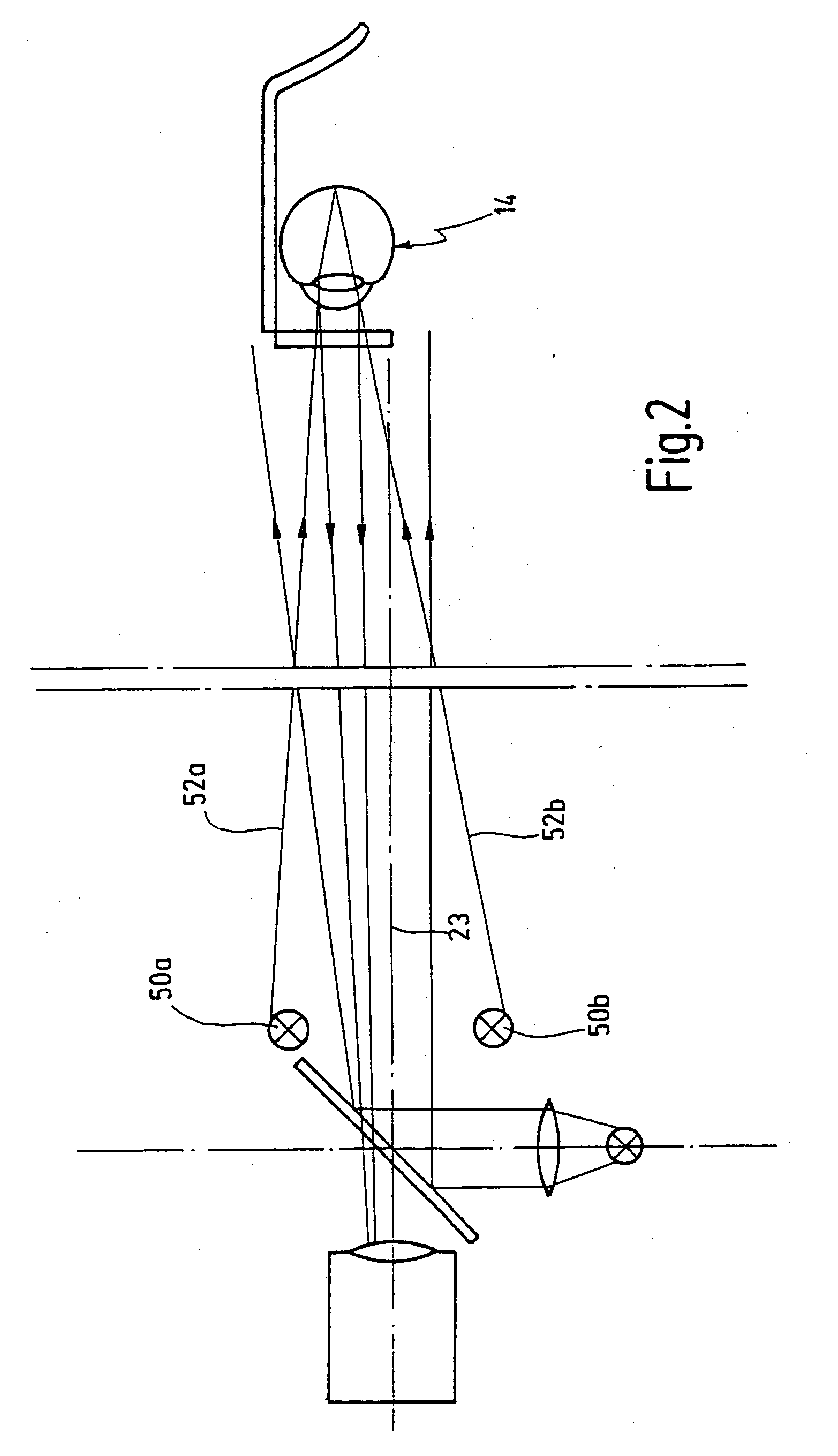Device and method for adjusting a position of an eyeglass lens relative to the position of a pupil
- Summary
- Abstract
- Description
- Claims
- Application Information
AI Technical Summary
Benefits of technology
Problems solved by technology
Method used
Image
Examples
Embodiment Construction
[0058] In FIG. 1 reference numeral 10 as a whole indicates an apparatus for adapting a position of at least one spectacle lens, in particular of a progressive power lens, of a spectacle relative to the position of a pupil of an eye of a person, the eye being associated to the spectacle lens.
[0059] In FIG. 1 the person as a whole is indicated at 12, only an eye 14 and a spectacle 16 or spectacle frame 18, resp., being shown.
[0060] A recording system indicated as a whole at 20 is located at a distance D of several meters, preferably two to eight meters.
[0061] Recording system 20 comprises a camera 22, the optical axis of which is designated with reference numeral 23.
[0062] An illumination device 24 is provided under a right angle relative to axis 23. Illumination device 24 comprises a light source 26, in particular a light diode (LED) operating in the red or the infrared range. Light source 26 has a lens 28 associated thereto. Light source 26 is directed onto a beam splitter 30. A...
PUM
 Login to View More
Login to View More Abstract
Description
Claims
Application Information
 Login to View More
Login to View More - R&D
- Intellectual Property
- Life Sciences
- Materials
- Tech Scout
- Unparalleled Data Quality
- Higher Quality Content
- 60% Fewer Hallucinations
Browse by: Latest US Patents, China's latest patents, Technical Efficacy Thesaurus, Application Domain, Technology Topic, Popular Technical Reports.
© 2025 PatSnap. All rights reserved.Legal|Privacy policy|Modern Slavery Act Transparency Statement|Sitemap|About US| Contact US: help@patsnap.com



